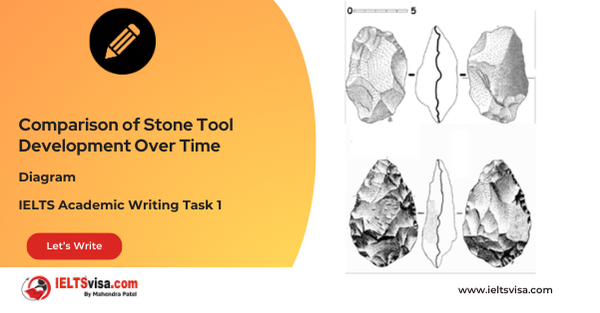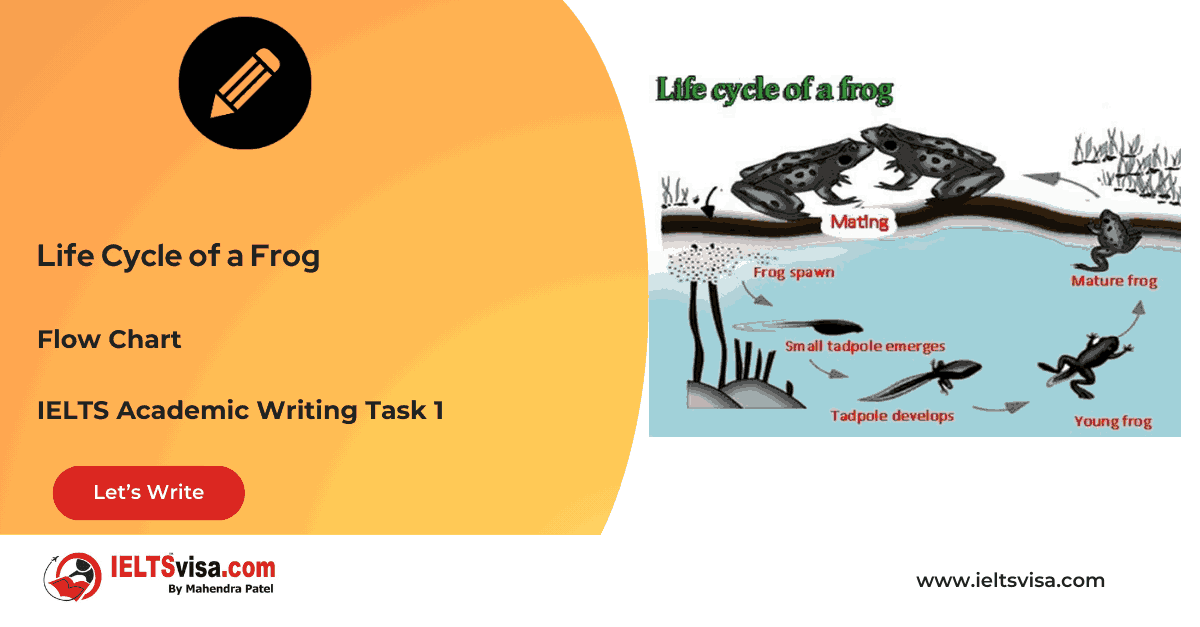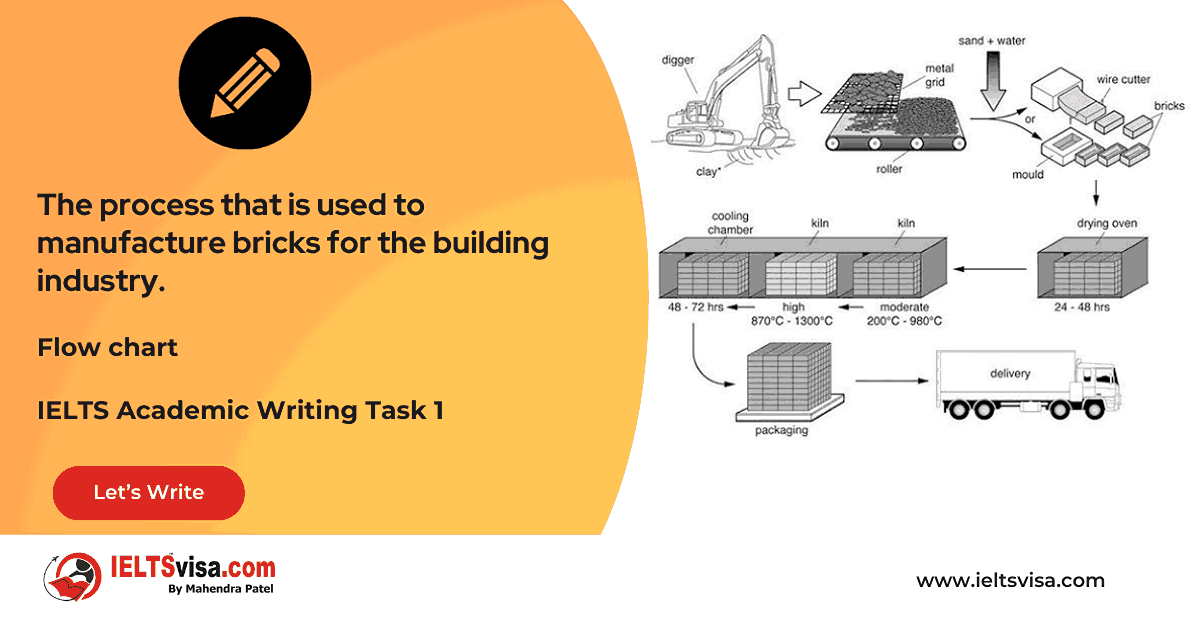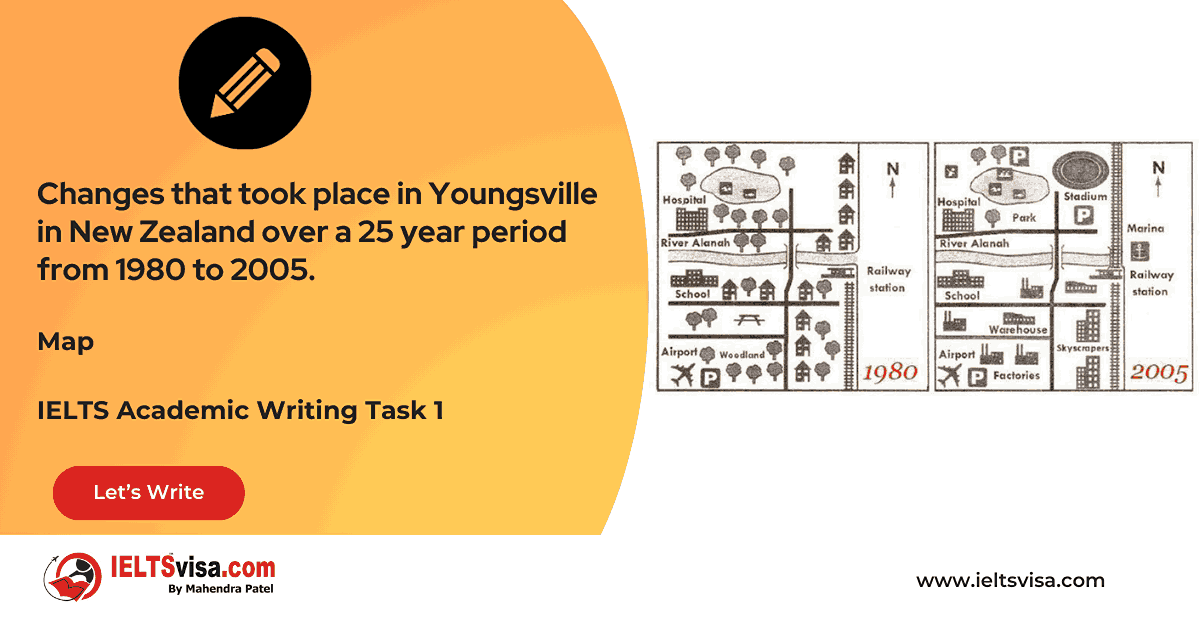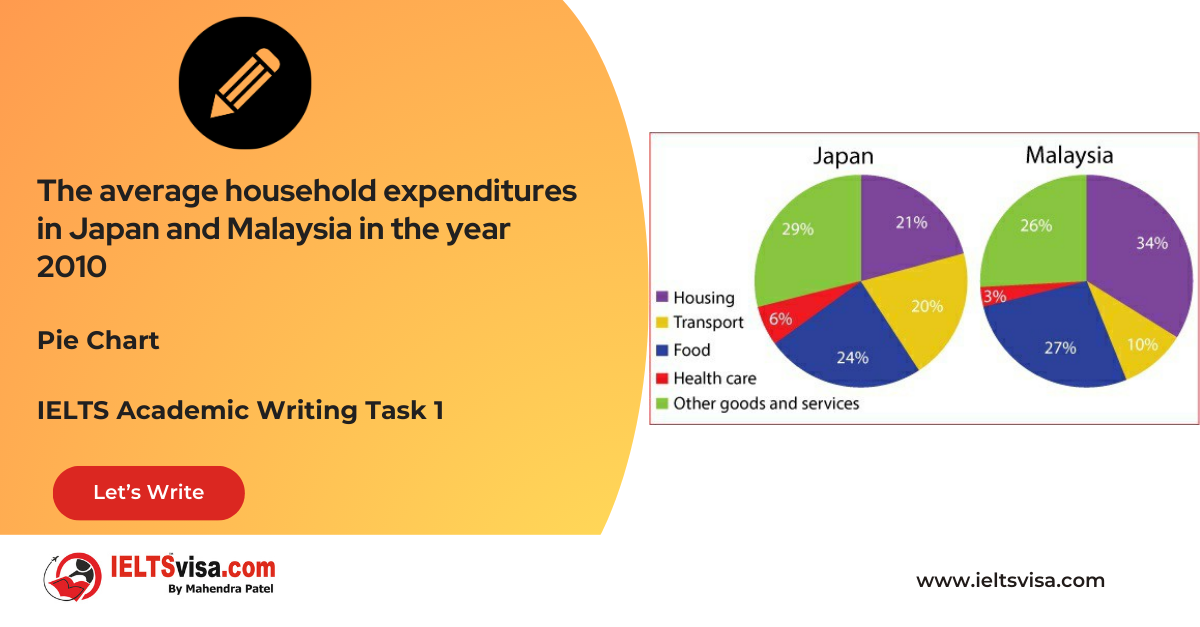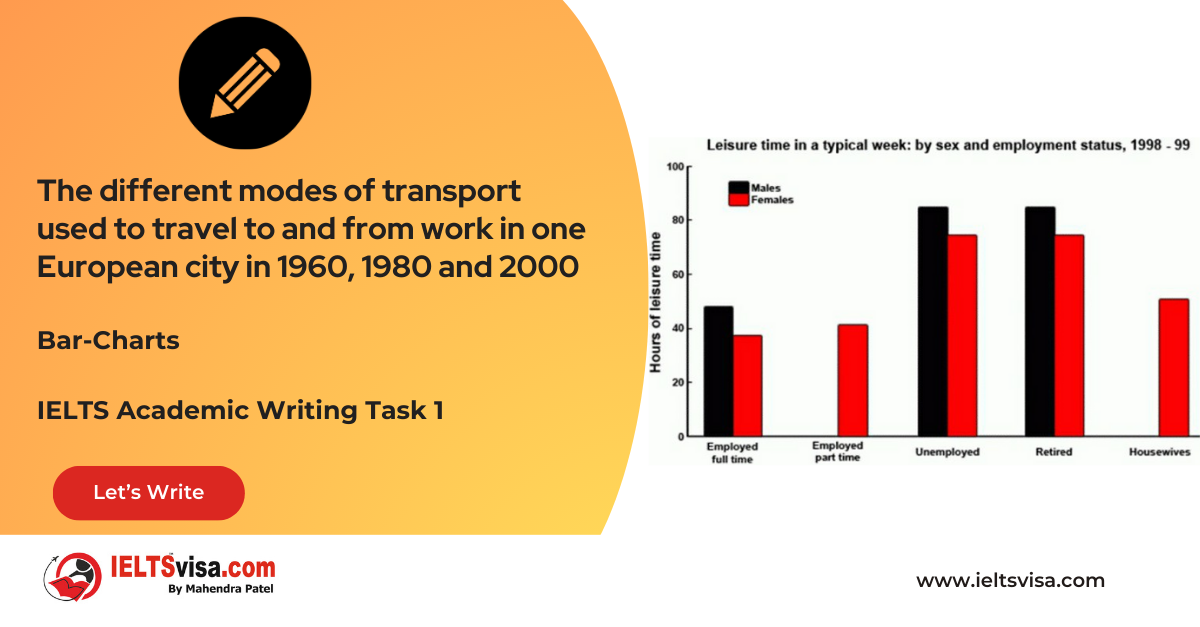Government Spending on Education, Medical Care, and Pensions from 2001 to 2051
IELTS Academic Writing Task 1 - Line Chart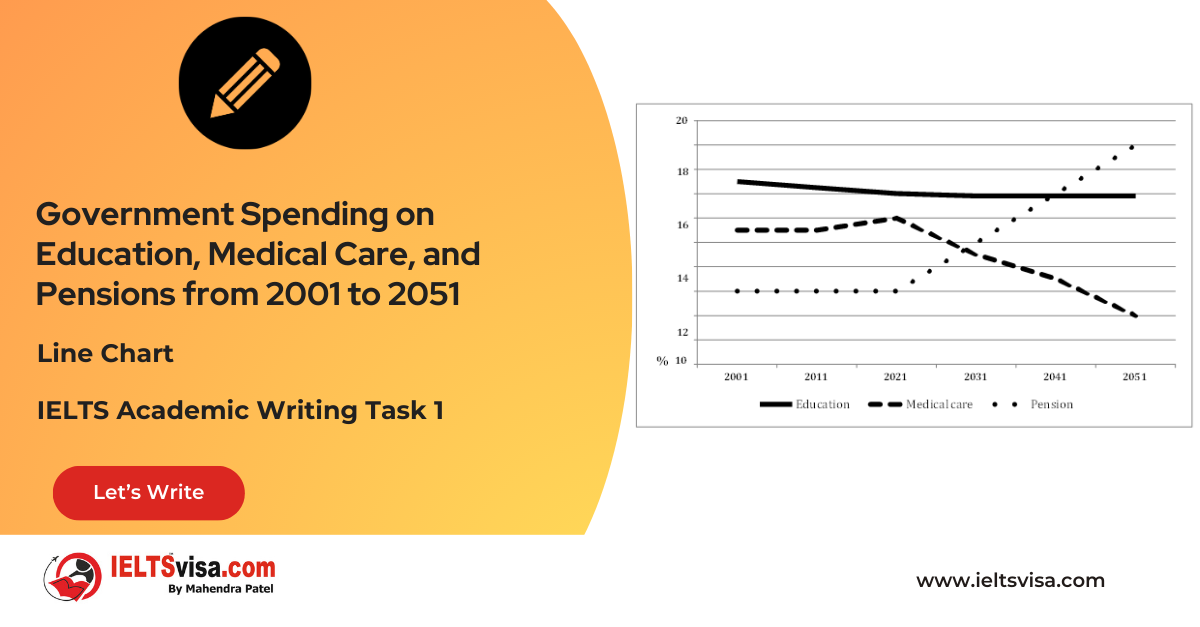
IELTS Writing Task 1 Question
The graph shows the spending on education, medical care and pension in a particular country from 2001 to 2051.
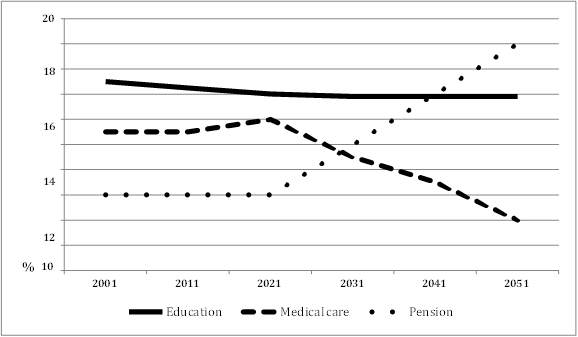
Common Questions for the Spending on Education, Medical Care, and Pensions Graph
1. Graph Types: Line graph
2. Title: Government Spending on Education, Medical Care, and Pensions from 2001 to 2051
3. What are the units of measurement?: Percentage (%)
4. Who: Government authorities or policymakers
5. When: From 2001 to projections until 2051
6. Where: Not specified (general context of a country)
7. Topic: Public spending in key social sectors
Key Features of the Spending Data
1. Education Spending :
- 2001: The highest expenditure was approximately 15%.
- Trend: Slight decline to 14% by 2021 and is projected to remain stable until 2051.
2. Medical Care Spending:
- 2001-2011: Steady spending at around 11%.
- Trend: Increase anticipated up to 2021, but a significant decline to about 4% by 2051.
3. Pension Spending:
- 2001: Lowest spending proportion, stable through 2021.
- Trend: Expected to grow rapidly, reaching nearly 18% by 2051.
Overall Summary
The graph illustrates the projected trends in government spending on education, medical care, and pensions from 2001 to 2051. Education spending, initially the highest, is forecast to stabilize at 14%. In contrast, medical care spending is predicted to rise until 2021 but will drastically decrease by 2051. Meanwhile, pensions, which began as the least funded area, are set to experience significant growth. This suggests a shift in priorities, with pensions becoming more prominent as spending on medical care declines.
Sample Answer
The diagrams illustrate how Pentland, a coastal town, transformed from 1950 to 2007. The significant changes over this 57-year period show a shift from a modest, industrial-focused area to a developed, bustling commercial town.
In 1950, Pentland was a relatively quiet town positioned south of the sea, divided into two parts by a straight main road. There was an industrial zone on the left side of the main road, while a car park was on the right. The rest of the area consisted mostly of open grassland, giving it a more rural appearance.
By 2007, the area had seen substantial development. The sea had been turned into a Yacht Marina, surrounded by a circular road connected to the original main road. The industrial area was transformed into a recreational space that included a park, a swimming pool, and a multi-storey car park. The right side, which previously had a car park, was replaced by numerous apartment buildings. The southeast corner of Pentland witnessed new residential housing and the addition of a cinema near the main and left side roads. Shops were also introduced along the northern edges of the side roads, contributing to the town’s commercial growth.
Overall, the changes show that Pentland evolved from a primarily industrial area into a lively coastal town with significant commercial and residential development
Top 25 Vocabularies
| Vocabulary (type) | Meaning | Synonyms | Examples |
|
Expenditure (noun) |
The amount of money spent in a particular area |
Spending, outlay |
“The government’s expenditure on education is substantial.” |
|
Projections (noun) |
Estimates or forecasts regarding future data |
Predictions, forecasts |
“The projections indicate a rise in pension spending.” |
|
Allocation (noun) |
The distribution of resources or funds |
Distribution, assignment |
“The allocation for medical care will increase until 2021.” |
|
Stability (noun) |
The quality of being steady and not changing |
Consistency, permanence |
“Spending on education is projected to show stability.” |
|
Decline (verb) |
A decrease in quantity or quality |
Diminish, drop |
“There will be a decline in medical care spending by 2051.” |
|
Trends (noun) |
General directions or patterns over time |
Patterns, movements |
“The line graph presents the trends in government spending over five decades.” |
|
Sector (noun) |
A distinct part or division of a larger system |
Division, area |
“The healthcare sector sees a significant decline in funding projections.” |
|
Proportion (noun) |
A part or share of a whole |
Percentage, ratio |
“The proportion of education spending stabilized after 2021.” |
|
Anticipated (adjective) |
Expected or predicted to happen |
Expected, forecasted |
“A sharp decline in healthcare spending is anticipated by 2051.” |
|
Exceed (verb) |
To go beyond a set limit or expectation |
Surpass, overtake |
“Pension spending will eventually exceed healthcare spending by 2051.” |
|
Increment (noun) |
A small, gradual increase |
Rise, addition |
“There is an incremental rise in pension expenditure after 2021.” |
|
Contrast (noun) |
A clear difference between two things |
Difference, distinction |
“There is a clear contrast between healthcare and pension spending trends.” |
|
Projected (adjective) |
Estimated or expected based on data |
Predicted, anticipated |
“The projected pension expenditure will reach 18% by 2051.” |
|
Sharp (adjective) |
Sudden and intense in degree |
Steep, abrupt |
“The healthcare sector is expected to see a sharp decrease in funding.” |
|
Rise (noun) |
An increase in level or quantity |
Growth, surge |
“A steady rise in pension allocation is observed from 2021 onwards.” |
|
Funding (noun) |
Financial resources provided for a purpose |
Financing, investment |
“Government funding for education will remain stable through 2051.” |
|
Divergent (adjective) |
Going in different directions |
Differing, opposing |
“Healthcare and pension expenditures show divergent trends.” |
|
Dominant (adjective) |
Having a commanding or leading position |
Leading, prevailing |
“Pensions are projected to become the dominant sector of government spending by 2051.” |
|
Estimates (noun) |
Rough calculations or judgments of value |
Approximations, calculations |
“Estimates suggest education spending will stabilize at 14%.” |
|
Gradual (adjective) |
Happening in small stages over time |
Steady, progressive |
“There is a gradual rise in pension spending after 2021.” |
|
Peak (noun) |
The highest point of a trend or quantity |
Summit, maximum |
“Healthcare spending is projected to peak in 2021 before declining.” |
|
Consistent (adjective) |
Remaining steady or unchanging |
Stable, uniform |
“The allocation for education remains consistent after 2021.” |
|
Reduction (noun) |
A decrease in amount or size |
Decrease, decline |
“Healthcare spending undergoes a reduction after 2021.” |
|
Prioritize (verb) |
To give special importance to something |
Emphasize, focus on |
“The government prioritized pensions in its long-term financial planning.” |
|
Allocate (verb) |
To assign resources or funds to specific areas |
Distribute, designate |
“Funds were allocated to various sectors, including education and healthcare.” |

Our Books
Master IELTS Speaking Part 1
IELTS Writing Task 1 Book
IELTS Writing Task 2 Book
Practice IELTS Other Modules
IELTS Listening
The IELTS Listening test assesses how well you can understand spoken English in various contexts. It lasts about 30 minutes and is divided into four sections with a total of 40 questions. The listening tasks become increasingly difficult as the test progresses.
IELTS Academic Reading
The IELTS Academic Reading section assesses your ability to understand and interpret a variety of texts in academic settings. It is designed to evaluate a range of reading skills, including skimming for gist, reading for main ideas, reading for detail, understanding inferences, and recognizing a writer's opinions and arguments.
IELTS Speaking
The IELTS Speaking test assesses your ability to communicate in English on everyday topics. It lasts 11-14 minutes and consists of three parts: introduction, cue card, and a discussion based on the cue card topic.
IELTS General Reading
IELTS General Reading tests your ability to understand and interpret various types of texts. Here are some key areas and types of content you can expect to encounter in the reading section, along with tips for effective preparation.
IELTS Academic Writing Task 1
In IELTS Academic Writing Task 1, you are presented with a visual representation of information, such as graphs, charts, tables, or diagrams, and you are required to summarize, compare, or explain the data in your own words.
IELTS General Writing Task 1
In IELTS General Writing Task 1, you are required to write a letter based on a given situation. The letter can be formal, semi-formal, or informal, depending on the prompt. Here’s a breakdown of the key components to include in your letter
IELTS Academic Writing Task 2
In IELTS Academic Writing Task 2, you are required to write an essay in response to a question or topic. Here’s a guide to help you understand the essential elements of this task
IELTS Exam Tips
To succeed in the IELTS exam, practice regularly, familiarize yourself with the test format, improve your vocabulary, develop time management skills, and take mock tests to build confidence.
Grammer for IELTS
Grammar is the foundation of effective communication in English. Understanding tense usage, subject-verb agreement, and sentence structure enhances clarity and coherence in writing and speaking.
Vocabulary for IELTS
Vocabulary plays a crucial role in the IELTS (International English Language Testing System) exam, especially in the Speaking and Writing sections. Here’s an overview of why vocabulary is important and how it impacts your performance
RECENT IELTS SAMPLES QUESTIONS AND ANSWERS
Task 1 – Diagram – Comparison of Stone Tool Development Over Time
20:00 Start Pause Stop [df_adh_heading title_infix="IELTS Writing Task 1 Question" use_divider="on"...
Task 1 – Flow chart -Life Cycle of a Frog
20:00 Start Pause Stop [df_adh_heading title_infix="IELTS Writing Task 1 Question" use_divider="on"...
Task 1 – Flow chart -The process that is used to manufacture bricks for the building industry.
20:00 Start Pause Stop [df_adh_heading title_infix="IELTS Writing Task 1 Question" use_divider="on"...
Task 1 – Map – Changes that took place in Youngsville in New Zealand over a 25 year period from 1980 to 2005.
20:00 Start Pause Stop [df_adh_heading title_infix="IELTS Writing Task 1 Question" use_divider="on"...
Task 1 – Pie Chart – The average household expenditures in Japan and Malaysia in the year 2010
20:00 Start Pause Stop [df_adh_heading title_infix="IELTS Writing Task 1 Question" use_divider="on"...
Task 1 – Bar Graph – The different modes of transport used to travel to and from work in one European city in 1960, 1980 and 2000
20:00 Start Pause Stop [df_adh_heading title_infix="IELTS Writing Task 1 Question" use_divider="on"...

